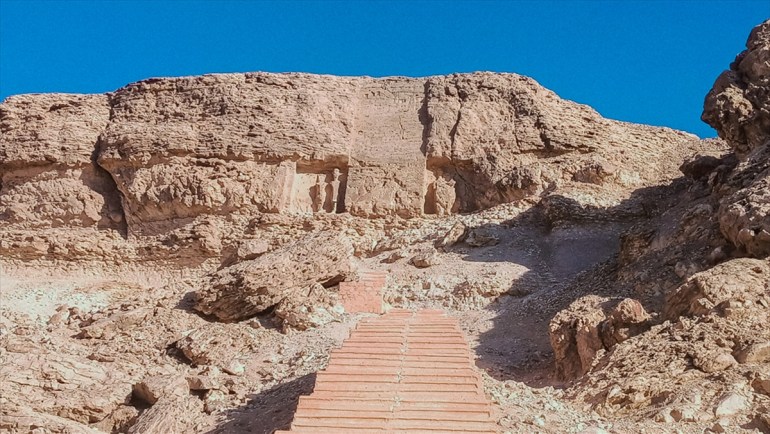Along the Nile River in Minya Governorate (central Egypt), mountains stand in the heart of a city carved in its rocks "religious secrets" 3,000 years ago, when it was the capital that embraced a new faith for the ancient Egyptians.
“Welcome to Amarna, the city of Akhenaten (King Amenhotep IV).” With this phrase, eyes rush in amazement to reveal these secrets through tombs, inscriptions, and statues, most of which were carved in the rocks of these mountains.
These secrets were carved in 1370 BC, by a decision of Akhenaten, who, according to historical sources, searched in this city for a new monotheistic faith, away from the rituals of the pharaonic god "Amun" and his dominant priests.
City of religious secrets
Egyptologists called "Tel el-Amarna" the "City of Religious Secrets", and before Akhenaten, no priests had trampled on it, nor had it witnessed rituals for any deity.
With the decision of Akhenaten, who ruled between 1352 and 1336 BC, the city became a new capital for this faith and the seat of the worship of "Aten", the pharaonic sun god, instead of what was worshiped at the time in the two capitals, Memphis in the north and Thebes in the south, and it was called "Akht-Aten" (meaning the horizon of the Aten). -sun disk).
The city of Akhenaten embraced inscriptions and statues representing an ancient "religious revolution" (Anatolia)
And the deity in this city was not Akhenaten, the son of God, as usual in the narratives of the ancient Egyptians, but the god "Aten", who was symbolized by the sun disk, and he used to bring out rays that end with human hands to give life to the universe.
With a tour inside the city, you will find Akhenaten's palace and the inscriptions of his monologues, the temples of "Aten", next to the royal cemetery, and 25 rock tombs.
The most prominent of these tombs is the tomb of Meri Re I, the high priest of Aten, which is filled with inscriptions and royal scenes, and in one of its rooms are two columns in the form of a bundle of papyrus.
And the glory of the city added that the beautiful Queen Nefertiti was a supporter of her husband Akhenaten and a supporter of his new faith, and their names remained together indicating this unique city, according to historical sources.
The archaeological head of Nefertiti is still a witness to the genius of this era in which the "City of Religious Secrets" lived.
Pharaonic inscriptions from Tell el-Amarna, Minya Governorate (Anatolia)
This head was found by a German mission in Amarna, and it was smuggled abroad in 1923, and it appeared in the Berlin Museum.
The city, surrounded by mountains on its northern, eastern and southern sides, and the Nile River along its western side, remains an incubator for a "religious revolution", according to the description of the Egyptian Ministry of Tourism and Antiquities.
The ministry says that this city is "the capital of Akhenaten, the first to call for monotheism, as he carried out what is often described as a religious revolution that mainly targeted the god (Amun), whose main center of worship was in Thebes (currently Luxor)."
After Akhenaten's death, according to the ministry, "the city was abandoned", but its landmarks remain to this day a source of fascination for endless groups of tourists and visitors throughout the year.
Since October 2020, the local authorities in Minya, in cooperation with the Ministry of Tourism and Antiquities, have started preparing a file for the inclusion of the “Amarna” archaeological site on the UNESCO World Heritage List.

